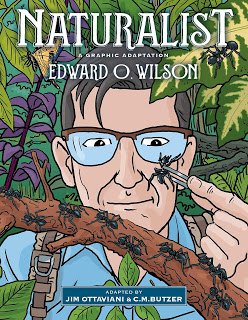Maybe an Artist by Liz Montague
I say this a lot, but audiences are important. If you’re putting something out into the world, and don’t have a sense of who would care about it, it might be because no one will.
But “people like me” is a valid answer. “People like me at age 10” is an even better one. People get quirkier and more specific every year they live; every eighty-year-old is an entirely different microsegment. But kids are still early in that journey; they’re weird and particular but still care about a lot of the same things.
And a good “this is the kind of weird kid I was” book is always welcome. Maybe an Artist is that kind of book, from cartoonist Liz Montague. It is about her childhood, and it is aimed at people who are children now – or who will be children when they read it; there’s no reason it won’t still be read in thirty years, by the kids of the kids reading it now.
Montague has had cartoons published in The New Yorker, had a strip called “Liz at Large” in Washington City Paper, and did other pretty high-profile cartooning gigs (a Google doodle! illos for the Obama Foundation!), even though she is, if I’m counting correctly, only about twenty-seven.
She gets into that quickly at the end, but Maybe an Artist is about how she got there – it’s the story of how drawing and art were important to her as a child, starting at the age of five in 2001. It’s really tightly focused on Montague, and deeply in her head most of the time. The external stuff of her life is included, some of the time, but it’s all about Montague, and, in the end, all about the pull of creating art and cartoons.
It won, eventually. We know that, because we have the book. But it wasn’t the path Montague or her family thought she was on – she was supposed to get an athletic scholarship to a good school, study something that would lead to a “good” career, and move forward. (And she did a lot of that: Maybe an Artist might be helpful for a lot of driven kids, or kids with demanding parents, to show how you can mostly follow the path laid out for you and still get to exactly the place you want to be.)
Here’s an example: the back cover mentions that the book includes how she “overcame extreme dyslexia through art,” but the book itself never uses the word “dyslexia.” Montague shows her problems with letters, and how she used art to work through it, but this is not a book about problems, or about diagnoses – it’s not that kind of YA graphic novel at all.
Montague has a cartoony, immediate style throughout, and keeps her young self front and center in the book – most of the panels are about Young Liz in one way or another, and Montague gives her younger self a lot of great facial expressions. She also lays out the book in a light, breezy way, with panels most of the time, filling up most of the page a lot of the time, but spilling out or vignetted regularly as well, to give more energy and life to her story.
This is much more a a purely YA book than I usually read; the audience is very much young maybe-artists. But Montague’s voice is true and straightforward and helpful; she gives a great account of the struggles and turmoils of her younger self. So there are joys, even for those who are very much past the maybes of their younger lives.
Reposted from The Antick Musings of G.B.H. Hornswoggler, Gent.










































